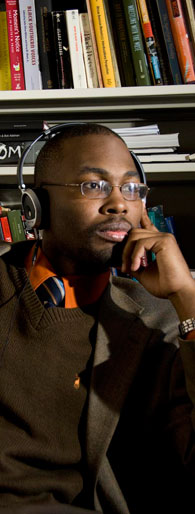This content is being reviewed in light of recent changes to federal guidance.
The Black Arts Enterprise—Professor Howard Rambsy
 Besides sharing parents and a last name with Howard Rambsy II, I had the opportunity to share the stage and serve on a panel of respondents with him at Make It Funky III. This experience gave me the opportunity to view Howard as more than an older sibling, but to also gain a deeper sense of the work he is doing. More importantly, I have come to understand how it extends our conceptions of African American literature and performative culture.
Besides sharing parents and a last name with Howard Rambsy II, I had the opportunity to share the stage and serve on a panel of respondents with him at Make It Funky III. This experience gave me the opportunity to view Howard as more than an older sibling, but to also gain a deeper sense of the work he is doing. More importantly, I have come to understand how it extends our conceptions of African American literature and performative culture.
Professor Adam Bradley’s lecture focused largely on the linguistic aspects hip-hop and offered explanations for how/why scholars can interpret rap music as if it were poetry. Bradley advocated for innovation in the sense of adapting new approaches and creating new standards to study hip-hop culture and relate it to the larger field of literature.
Howard’s response allowed me to think critically about his scholarship of the Black Arts Movement (BAM). His book The Black Arts Enterprise investigates how through collaborative means participants in the BAM helped to develop new critical approaches to African American literary art. Taking this into consideration, Howard’s responses were valuable since he was able to point-out distinct overlaps and variants of hip-hop artists and poets of 1960s and 70s—especially, those between what we know as underground or independent artists.